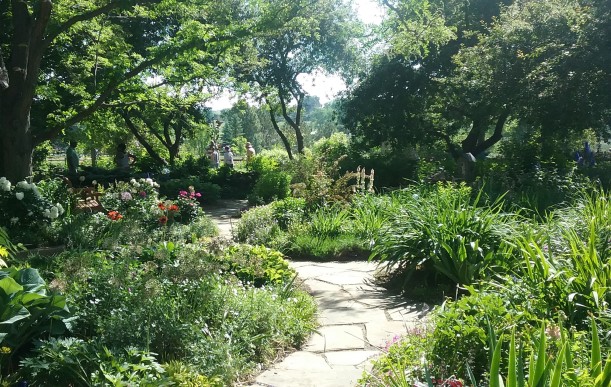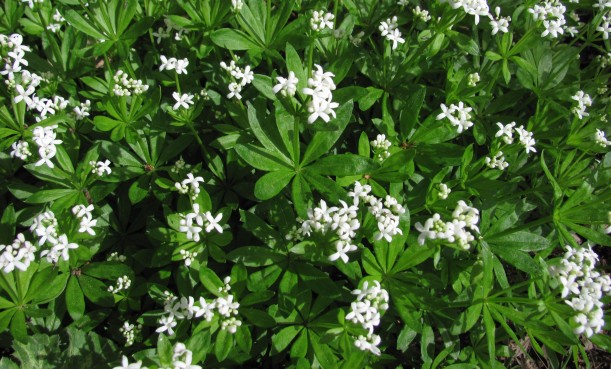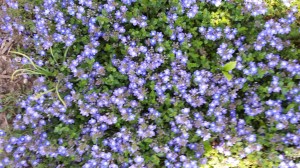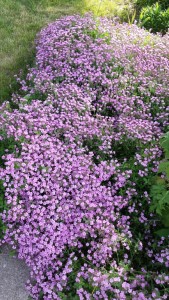
Outside Ft. Collins, Colorado, one woman, over 20 years, has created a garden refuge. Photo by Barb Gorges.
Published Aug. 12, 2018, in the Wyoming Tribune Eagle and at Wyoming Network News, https://www.wyomingnetworknews.com/garden-gossip-what-ive-learned-as-a-master-gardener.
By Barb Gorges
This is my seventh season as a Laramie County Master Gardener (and Wyoming Tribune Eagle garden columnist). I know more now than when I finished the training because there’s always someone to talk to who knows more than me about any aspect of gardening.
I’ve interviewed many people, including other Master Gardeners, for previous columns which are archived at https://cheyennegardengossip.wordpress.com/. Here’s what I’ve learned:
Always evaluate gardening information. Where does that gardener garden? Is it a garden with a similar climate or microclimate, soil and growing season to mine? Will the treatment harm my soil?
There’s a difference between sticking stuff in dirt and growing plants with more mindfulness—and record-keeping.
You can grow many things in Cheyenne, but not all things. Just keep experimenting with the short-season veggies and consider building a greenhouse or high tunnel.
Cheyenne’s blooming season is longer than you think. In my garden some spring bulbs bloom in March. Some years the frost doesn’t finish the asters until the end of October.
Garden beauty is subjective but good garden design is practical: put short plants in the front of beds, veggies by the kitchen door and don’t plant trees under power lines.
Every growing season is different. Not every year has powdery mildew, black spot or blossom end rot.
Know when to give up. Or try the plant in a different location. Or try a different variety.
Gardeners are generous. They share plant thinnings and seeds because they can’t bear to compost them.
Propagation from root divisions, cuttings and seeds is rewarding, especially when you share.
Never add lime, an alkaline substance, to Cheyenne’s already alkaline soils.
Gardeners like a challenge, even as extreme as planting acid-loving blueberries in buckets full of specially mixed acidic soil.
Soil is every gardener’s most valuable asset. Preserve its structure and microbiome by tilling and hoeing as little as possible and let mulch keep the weeds down.
Composting your discarded plant material in your own bin or pile saves you money on fertilizer and the cost of having the sanitation department haul it away.
Getting watering and mulching right is more important to plants than fertilizer.
Good pruning benefits trees and shrubs by making them look good and grow better.
Right plant in the right place—not all trees are growing in the right place.
Hail is a fact of life here. Protect tomatoes with hardware cloth screen overhead and grow skinny-leaved and skinny-petalled flowers.
Replacing your lawn with gravel is not less work in the future. It gets weedy. And gravel doesn’t shade the ground, which makes your yard hotter. You are better off with a low-growing ground cover.
Chemical pesticides are rarely necessary in the residential garden. You can pick off pests and remove diseased plant parts by hand.
Stressed plants (too much or too little water, too much fertilizer, too much or too little sun) attract disease and pests.
The sooner you pull a weed or cut it off at ground level, the less work it is later.
Always take care of weeds before they set seed.
Tending a garden is stress-reducing. Many of the gardeners I’ve interviewed have high stress jobs: lawyer, judge, law enforcement, social worker, doctor.
Gardening is good exercise. Even if you aren’t vigorously digging a new bed, just walking around pulling the occasional weed and deadheading the roses is better for you than sitting.
Gardeners see more bees, butterflies and birds—just more of nature.
Visiting botanic gardens when you travel makes for beautiful memories.
Reading to prepare for and dreaming about next year’s garden will get you through a long winter.
Want to start gardening or garden more intentionally and with more knowledge? Become a Laramie County Master Gardener. It’s not too early to find out about the next class. Call Catherine Wissner, Laramie County Extension horticulturist, 307-633-4383.

Asters bloom and attract a bee in a natural rock garden July 18, 2018, in the Snowy Range in southeastern Wyoming at an elevation of 9,000 to 10,000 feet. Photo by Barb Gorges.

 Published Aug. 13, 2017, in the Wyoming Tribune Eagle, “Covers of Color, ground covers good for replacing grass or gravel, and feeding bees”
Published Aug. 13, 2017, in the Wyoming Tribune Eagle, “Covers of Color, ground covers good for replacing grass or gravel, and feeding bees”


